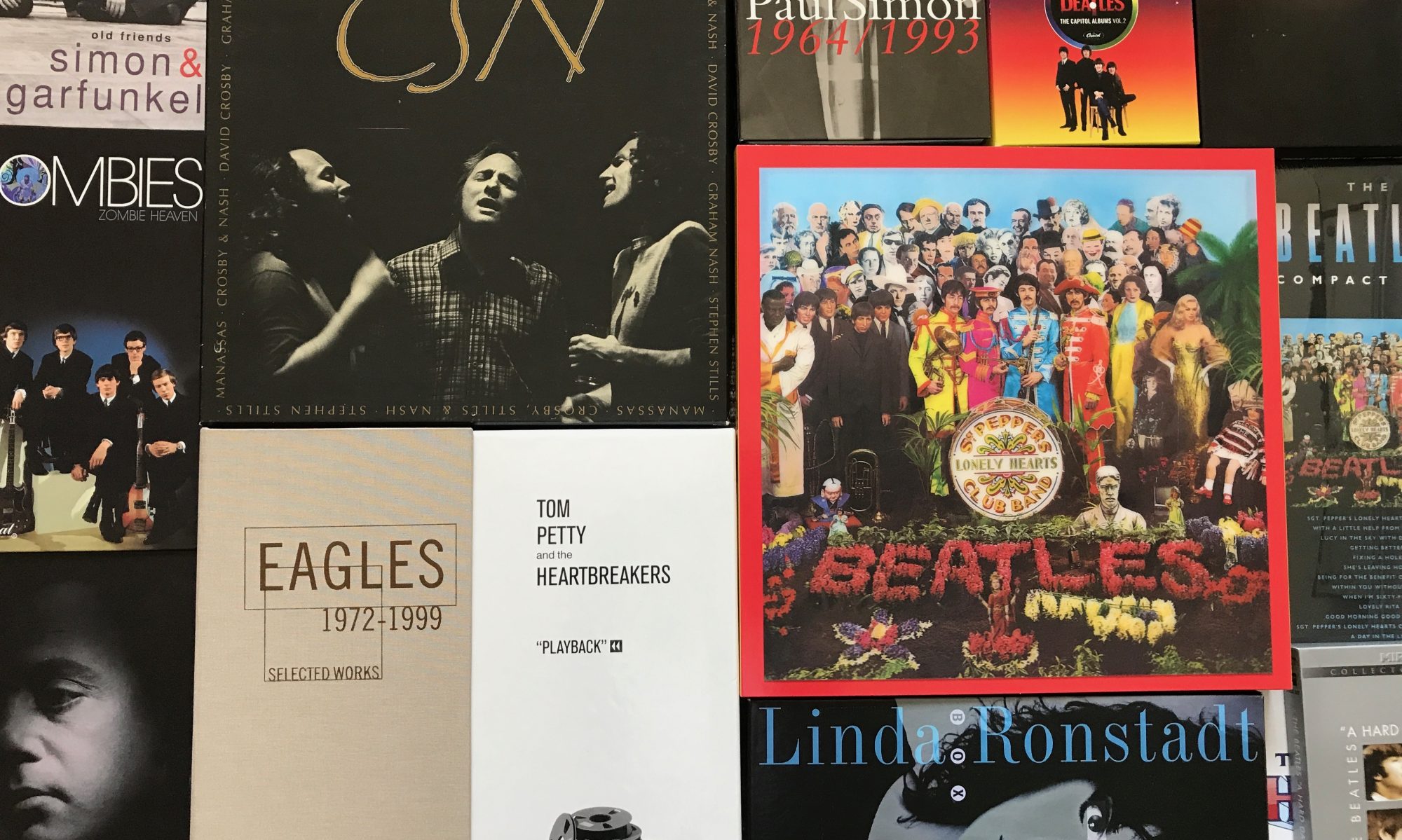A good friend, Al Koontz, recently suggested a story idea. He thought I should write an article about the best vocalists. Among those he mentioned were John Lennon, Stephen Stills, and Linda Ronstadt. I thought about it, and came to the conclusion that it’s impossible to separate the vocalist from the music they perform. If you don’t like a particular song or style of music, you’re not going to like the vocalist. If you like the music, you’re certainly more likely to think the singer is good. Plus, some singers are great interpreters of their own songs, but don’t have great voices.
So I’m still thinking about how to write an article along those lines, and Rolling Stone comes out with a list of the “The 200 Greatest Singers Of All Time”. Here’s the artwork they used:
Of course it’s not…”Of All Time”, because you won’t find Bing Crosby on the list (my dad’s favorite singer). They also make it clear they’re not talking about which artists have the best voices, otherwise they wouldn’t be able to include some of the artists I like, such as Neil Young and Bob Dylan. But, it’s really hard (and probably wrong) to not include the quality of a voice…good range, good tone, good pitch…when seeking the “greatest singer”.
The rankings are highly questionable. Is Ozzy Osbourne (#112) really a better singer than Barbra Streisand (#147)? The musical genres are so varied that it’s impossible to definitively rank the artists.
If you’re looking for a Rock artist, don’t look at the top ten, because they’re all Soul singers (it’s a glaring bias). In fact, there aren’t even ten Rock singers in the top 50. #1 on the Rolling Stone list is Aretha Franklin. Aretha had a wonderful soulful style, and an amazing voice. She’s a solid choice, but the Greatest 200 Singers list is basically a joke. Here are the top ten singers on their list. See how many of your favorites are included.
- Aretha Franklin
- Whitney Houston
- Sam Cooke
- Billie Holiday
- Mariah Carey
- Ray Charles
- Stevie Wonder
- Beyonce
- Otis Redding
- Al Green
Only two of these artists are pictured in the graphic that accompanied the article. They had to go farther down the list to find any balance for the look of it. The top ten are all good R&B singers, but it would be easy to slot-in Pop and Rock singers who are at least as good as most of them.
The first Classic Rock artist is John Lennon at #12. He was #5 when they did a similar list in 2008. I love John Lennon’s singing. He could rock uptempo songs (“Twist and Shout”), or express the beauty of lyrics in a ballad (“In My Life”). But, was he even the best singer in The Beatles? Paul McCartney could also rock a vocal like “Helter Skelter” or “Long Tall Sally”, and sing ballads like “Here There And Everywhere”. Plus, Paul had a better vocal range, and could make a song soar with his upper register. Paul was ranked the 26th best singer (down from #11 in 2008). Bob Dylan was 15th. He’s a great songwriter, but is he a better singer than Paul McCartney or Frank Sinatra (#19)?…or maybe most of the other 185 singers ranked lower? The people who developed this list often confused “Greatest Artist” for “Greatest Singer”.
Here’s an interesting comparison. About three years ago, Billboard Magazine published a list of the Top Artists Of All Time. It’s based on how the artists performed on the albums and singles charts, which is mostly by sales and now streaming.
- The Beatles
- The Rolling Stones
- Elton John
- Mariah Carey
- Madonna
- Barbra Streisand
- Michael Jackson
- Taylor Swift
- Stevie Wonder
- Chicago
Only two artists made both top tens (Mariah Carey & Stevie Wonder). No ranking is perfect, but people spending their time and money on artists is probably more important and accurate than some people sitting in a room making up a list of “the greatest singers” using their own biases as to what makes a great singer.
Without deeply analyzing the list, a couple of omissions jumped out. James Taylor and Alison Krauss are not on the list. James Taylor’s recordings display his excellent baritone voice, and they show his nuanced way of expressing lyrics. James Taylor and Neil Young (#133) are two of my very favorite artists, but James is clearly the better singer. Alison Krauss is a 27-time Grammy winner, with one of the clearest most beautiful voices in music history. There are a lot of country artists on the list who can’t touch her singing ability.
Just a few more who didn’t make the list:
 Don Henley, Stephen Stills, Billy Joel
Don Henley, Stephen Stills, Billy Joel
 Jim Morrison (Doors), Justin Hayward (Moody Blues), David Gilmour (Pink Floyd)
Jim Morrison (Doors), Justin Hayward (Moody Blues), David Gilmour (Pink Floyd)
Plus…Cat Stevens, Paul Simon, Ann Wilson (Heart), Jackson Browne, Pat Benatar, Sting, Tom Petty, Carole King, Neil Diamond, and so many more classic artists, including many great lead singers of bands.
While I’m thinking about the Classic Rock artists, others in the public were shocked that singers like Celine Dion, Tony Bennett, Jennifer Hudson, and Nat King Cole were left off. Choosing and ranking the 200 greatest singers is a fool’s errand, and apparently that’s who did it.
The list is just designed to get the magazine some publicity, and to generate public discussion over some of the oddball choices and positioning of the artists. The sad part is this list will be cited in other articles as some type of authority that so-and-so is the __th greatest singer ever!
Extra: You won’t believe what Rolling Stone did to the 500 Greatest Albums list, here’s the link:
























































































































